Name to know: German furniture designer Valentin Loellmann

One of the standout pieces on show at London's PAD fair this year comes in the organic and graceful form of a desk by young German designer Valentin Loellmann. Winner of the Moët Hennessy PAD award for 'best piece of contemporary design', it is part of a stellar selection of pieces on the stand of Galerie Gosserez, a relative new-comer to the Parisian design gallery game.
The new desk's smooth oak top - charred to black, then waxed to give it a leathery feel - belies the intricacy of its underside, made from plates of metal that have been welded together and moulded around the wood. The desk stands on thin, hammered metal legs that look as if they've been drawn in the air. 'I like to hide the complexity of my designs,' says the 30-year-old, who studied product design at the Maastricht Academy of Fine Arts, and graduated in 2009. 'I create furniture that looks almost like it could have grown that way in the wild.'
Valentin's desk is part of his 'Seasons' collection for Galerie Gosserez, which also includes a dining table and benches made from charred wood. All the joints are hidden, which makes each object look like one solid piece of nature's own creation.
'His work is very elegant and poetic,' says Marie-Bérangère Gosserez, who founded the gallery in 2010 and has been working with Loellmann for three years since spotting his graduate project at Dutch Design Week in Eindhoven. 'It is totally timeless and both young and old people are drawn to it.'
Loellmann counts PAD founder Patrick Perrin among his private clients, and next week his work will go on show alongside artists Daniel Buren and Leandro Erlich and designer Matali Crasset in Private Choice, an exhibition curated by Nadia Candet for FIAC in Paris. We caught up with him during PAD to find out more about his work...
W*: You hail from a family of artists, including a ceramicist and a photographer. What influence has this had on the way you work?
VL: It's entirely natural for me to be able to build something out of nothing. My father taught me to always be making things in my head. I never sketch. During my studies, I realised I'm not really a conceptual person, I prefer to start building and see something come to life. The inspiration comes entirely from the working process.
Describe where you work?
My studio is a former hat factory in Maastricht. I share it with a group of painters. I have built a relaxed and atmospheric surrounding that cultivates my work.
Talk us through some of your key projects so far?
After graduating, I created a family of furniture called M&Mme, pieces of which were shown at Galerie Gosserez and Ammann Galery. They were hand-made from old bangkirai wood, reinforced with a polyester skin. With the more recent Fall/Winter pieces from the Seasons collection for Galerie Gosserez, I wanted to create furniture in a very simple way. I went to the woods and searched for the right branches. I wanted to create useable furniture; very organic and personal objects. The pieces I make have always developed from a curiosity; a curiosity towards materials, their travels and the histories they tell. Using craftsmanship techniques, I create new narratives with them. I treat my materials like living organisms.
You create all of your furniture by hand. Won't it be difficult to expand if you continue to do everything yourself?
I am beginning to work with assistants and my team is growing but it's important for me to have very close control of my pieces. Rather than produce big volumes of work, I would rather limit what I do, and focus on the things that really interest me and support my work, process and growth.
What have you created for the Private Choice installation in Paris?
I visited the house where the exhibition is being held - the former home of a string of artists and creatives, including painters Julie Manet and Berthe Morisot and writer Paul Valéry. The curator asked me to create something that would make the house look more lived in. She asked for a dining set, and it was clear to me that this would be the set from my Fall/Winter collection. On our way out, we passed by a little office room. I was charmed by this secret space, and imagined putting something inside it. So it inspired a new desk. I like to make things that are influenced by the space they are intended for but also add something new to a room.

The German designer founded his design studio in 2009 in Maastricht
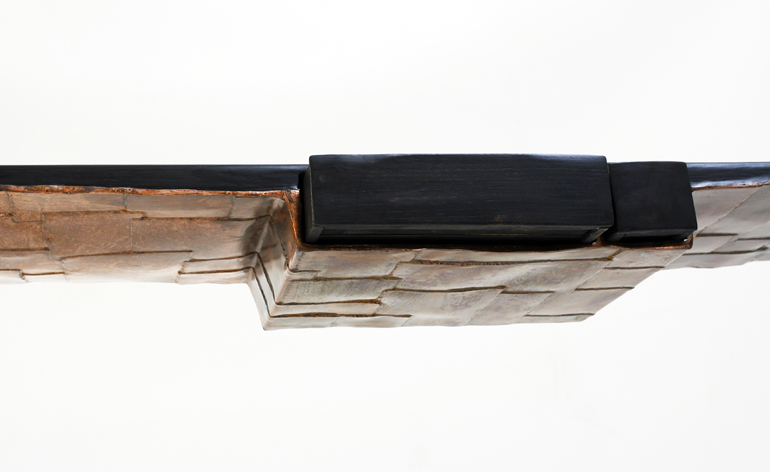
The new desk's smooth oak top belies the intricacy of its underside, made from plates of metal that have been welded together and moulded around the wood
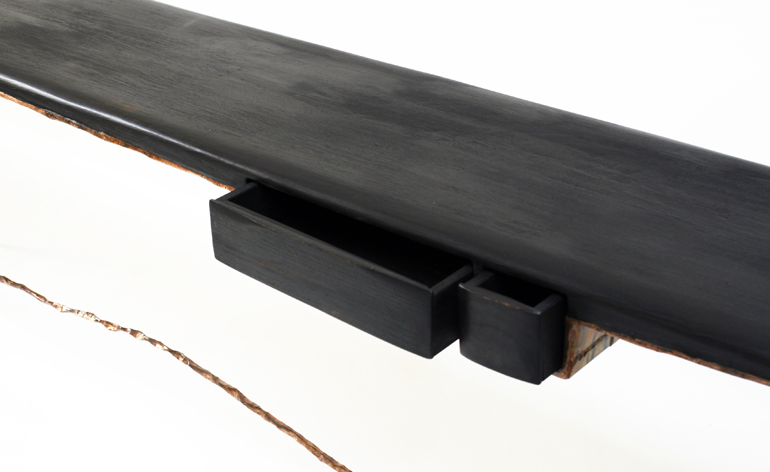
Loellmann has charred the oak top to black, then waxed to give it a leathery feel
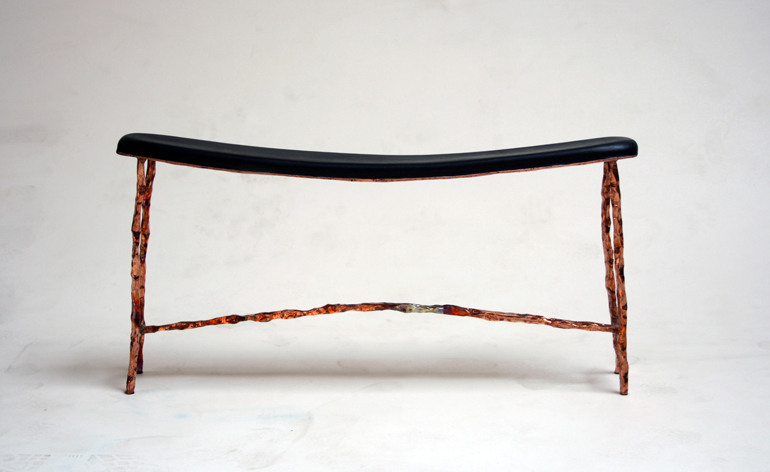
Like the desk, this Spring/Summer stool - also created for Galerie Gosserez - features slim, hammered copper legs
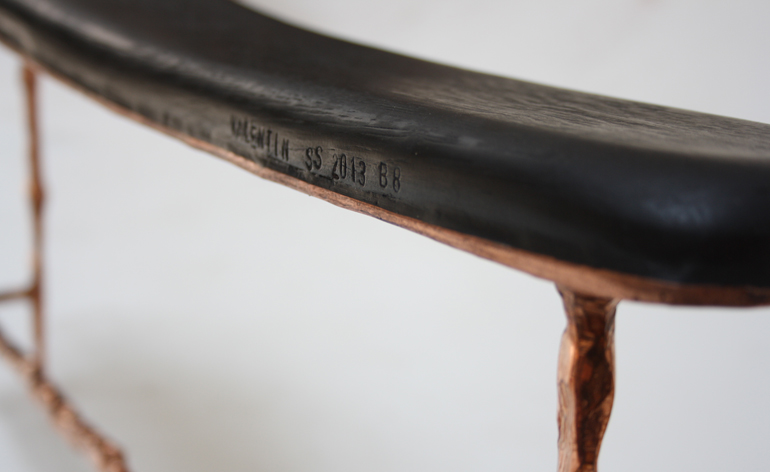
All of Loellmann's furniture is made by hand, stamped and numbered
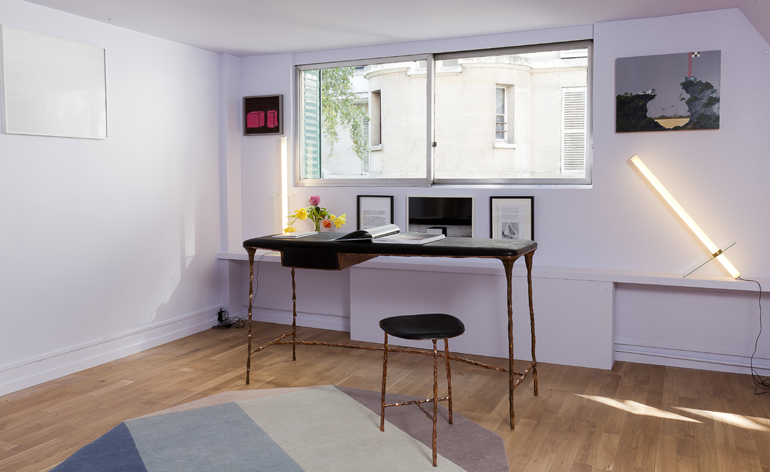
Loellmann has created a new version of the desk for an exhibition called 'Private Choice' in Paris, opening on 21 October. Inside a historic house - once the home or studio of a string of artists and creatives - his desk is installed alongside artworks by Geert Goiris, and lamps by Naama Hofman
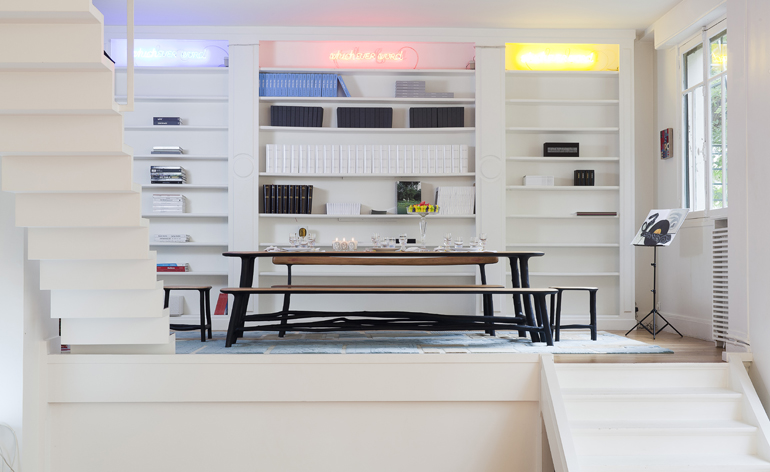
The designer's Fall/Winter dining set is also installed in the house
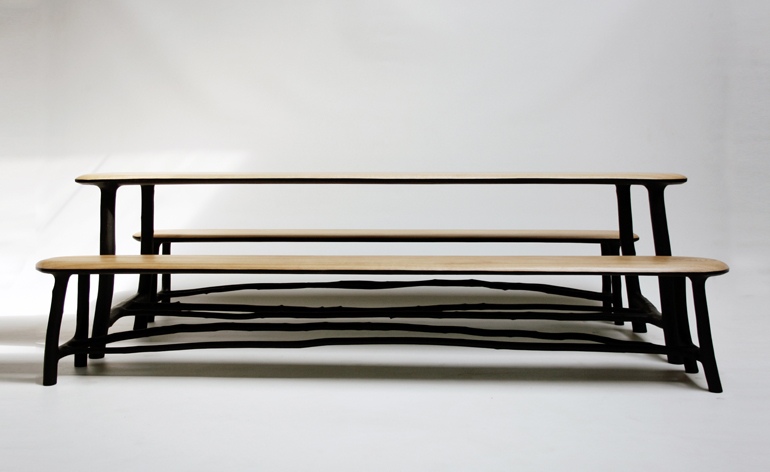
A close-up look at the Fall/Winter collection, which comprises tables, stools and benches of different sizes, made from hazel and oak
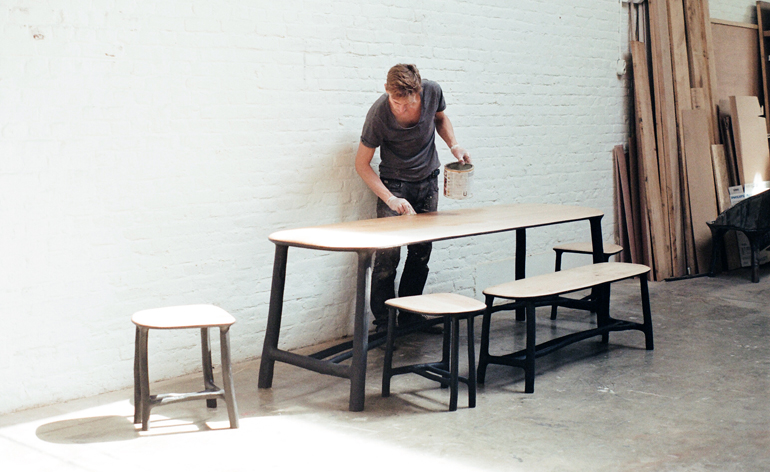
Loellmann uses mortise-and-tenon joints to connect hazel branches to the oak tops, and a mixture of sawdust and glue to fill and round off these connections, resulting in organic forms with no sharp edges
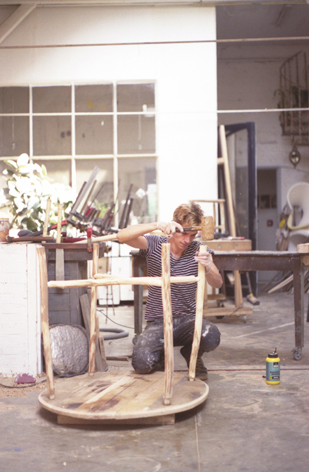
'I create furniture that looks almost like it could have grown that way in the wild,' says the 30-year-old, who studied product design at the Maastricht Academy of Fine Arts, and graduated in 2009
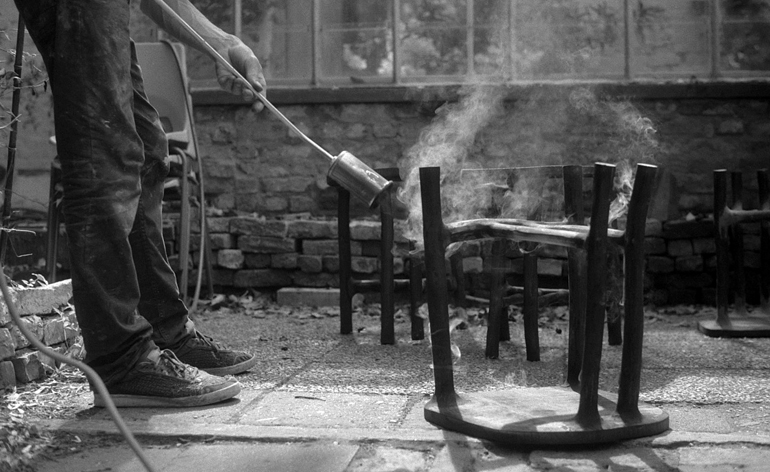
The pieces are burned and treated with wax, after which the top is sanded, polished and treated with oil
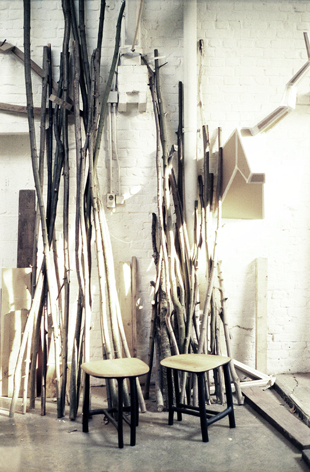
The hazel branches are chosen for their strength and distinct character
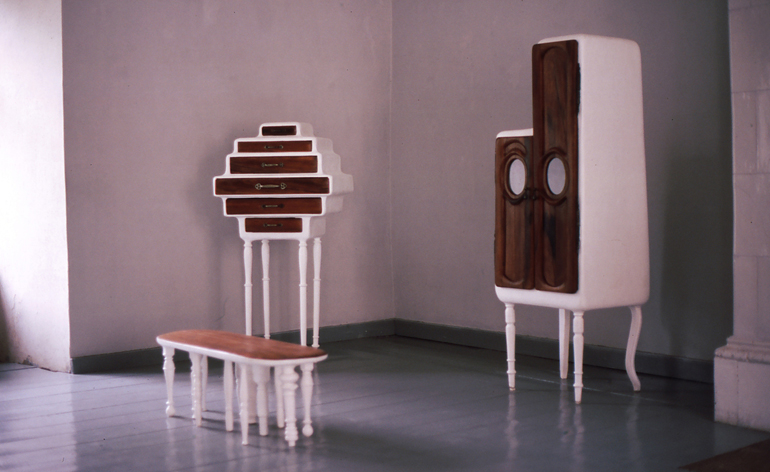
Loellmann's early M&Mme collection was handmade from old bangkirai wood, reinforced with a polyester skin
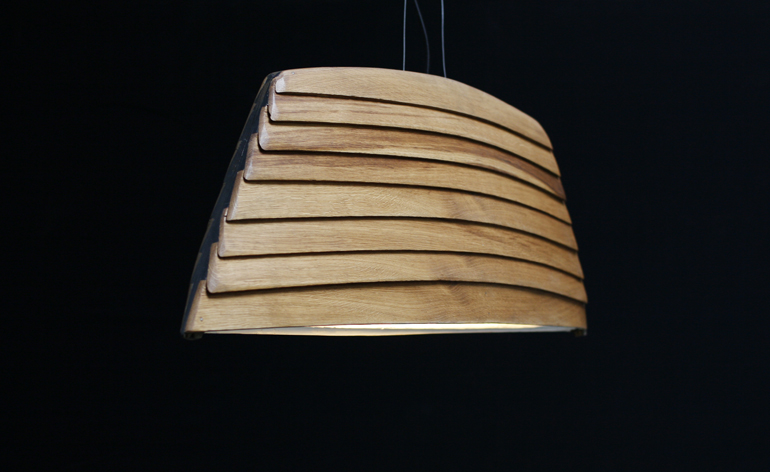
The 'Drift' light, made from wood
Receive our daily digest of inspiration, escapism and design stories from around the world direct to your inbox.
Malaika Byng is an editor, writer and consultant covering everything from architecture, design and ecology to art and craft. She was online editor for Wallpaper* magazine for three years and more recently editor of Crafts magazine, until she decided to go freelance in 2022. Based in London, she now writes for the Financial Times, Metropolis, Kinfolk and The Plant, among others.
-
 Usher opens up about breakfast playlists, banana pudding and why a glass tumbler is always on his rider
Usher opens up about breakfast playlists, banana pudding and why a glass tumbler is always on his riderOn the heels of a collaboration with Baccarat, the Grammy-winning singer-songwriter breaks down his entertaining tips. 'Hosting is an expression of how you feel about your guests and also who you are.'
-
 The beauty trends that will define 2026, from ultra-niche fragrances to anti-ageing dental care
The beauty trends that will define 2026, from ultra-niche fragrances to anti-ageing dental careAs we enter the new year, we speak to experts in fragrance, skincare, aesthetics, wellness and more about the trends that will be shaping the way we look
-
 The most stylish hotel debuts of 2025
The most stylish hotel debuts of 2025A Wallpaper* edit of this year’s defining hotel openings. Design-led stays to shape your next escape
-
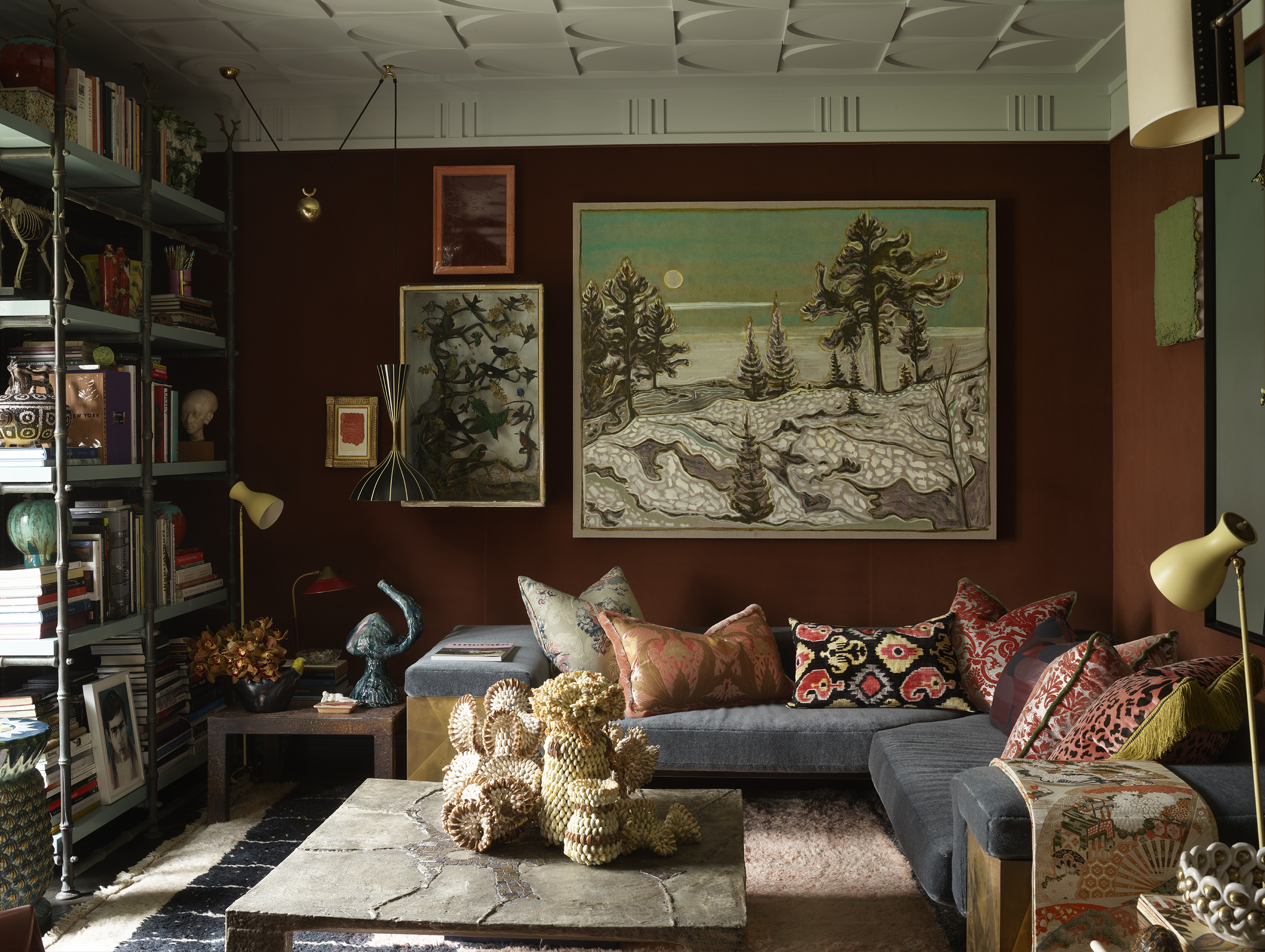 This designer’s Shoreditch apartment is ‘part grotto, part cabinet of curiosities’
This designer’s Shoreditch apartment is ‘part grotto, part cabinet of curiosities’The apartment serves as Hubert Zandberg’s ‘home away from home’, as well as a creative laboratory for his design practice. The result is a layered, eclectic interior infused with his personality
-
 Colour and texture elevate an interior designer’s London home
Colour and texture elevate an interior designer’s London homeTo beautify her home without renovations, Charu Gandhi focused on key spaces and worked with inherited details
-
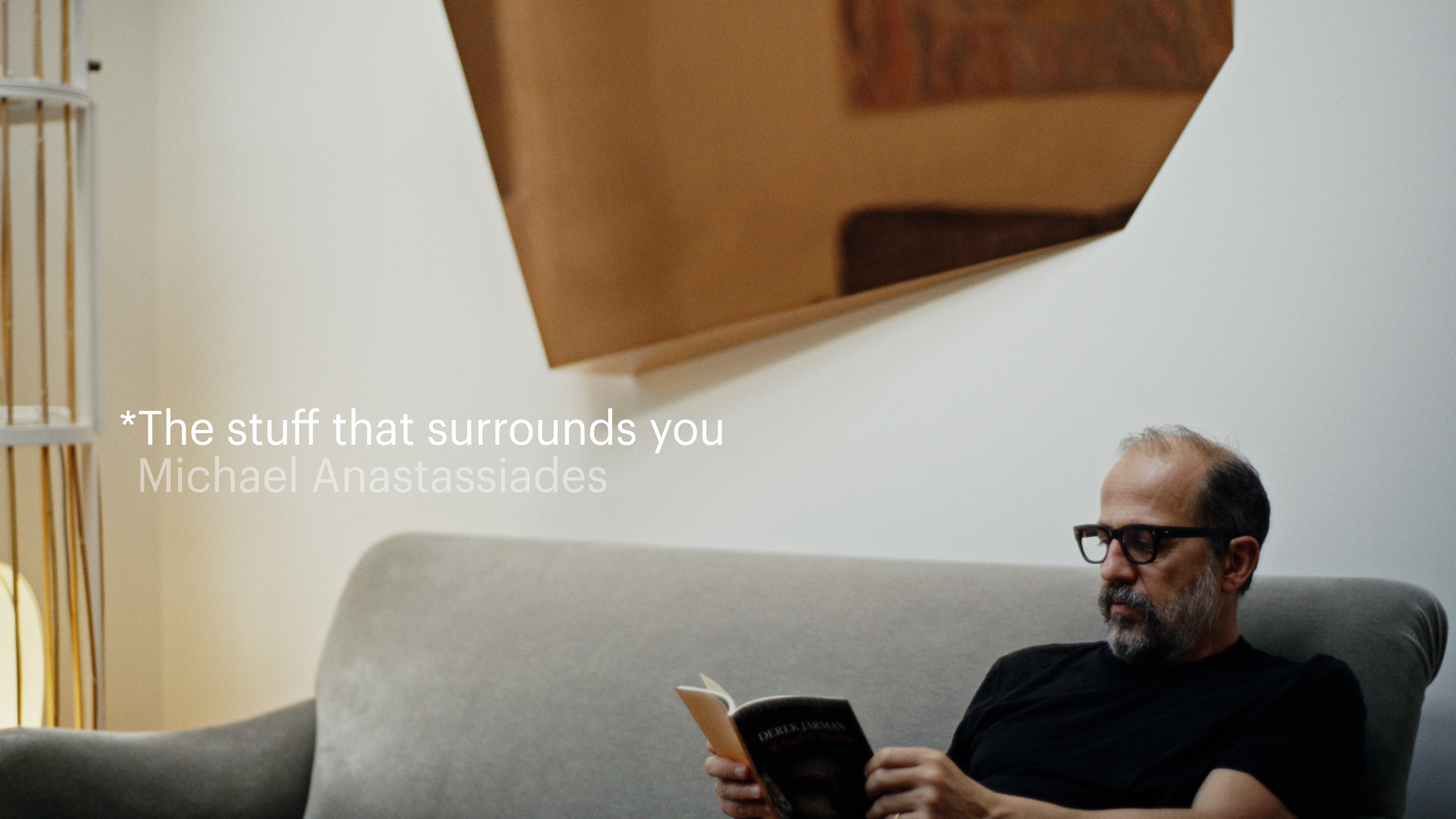 The Stuff That Surrounds You: Inside the home of designer Michael Anastassiades
The Stuff That Surrounds You: Inside the home of designer Michael AnastassiadesIn The Stuff That Surrounds You, Wallpaper* explores a life through objects. In this episode, we step inside one of the most considered homes we've ever seen, where Anastassiades test drives his own creations
-
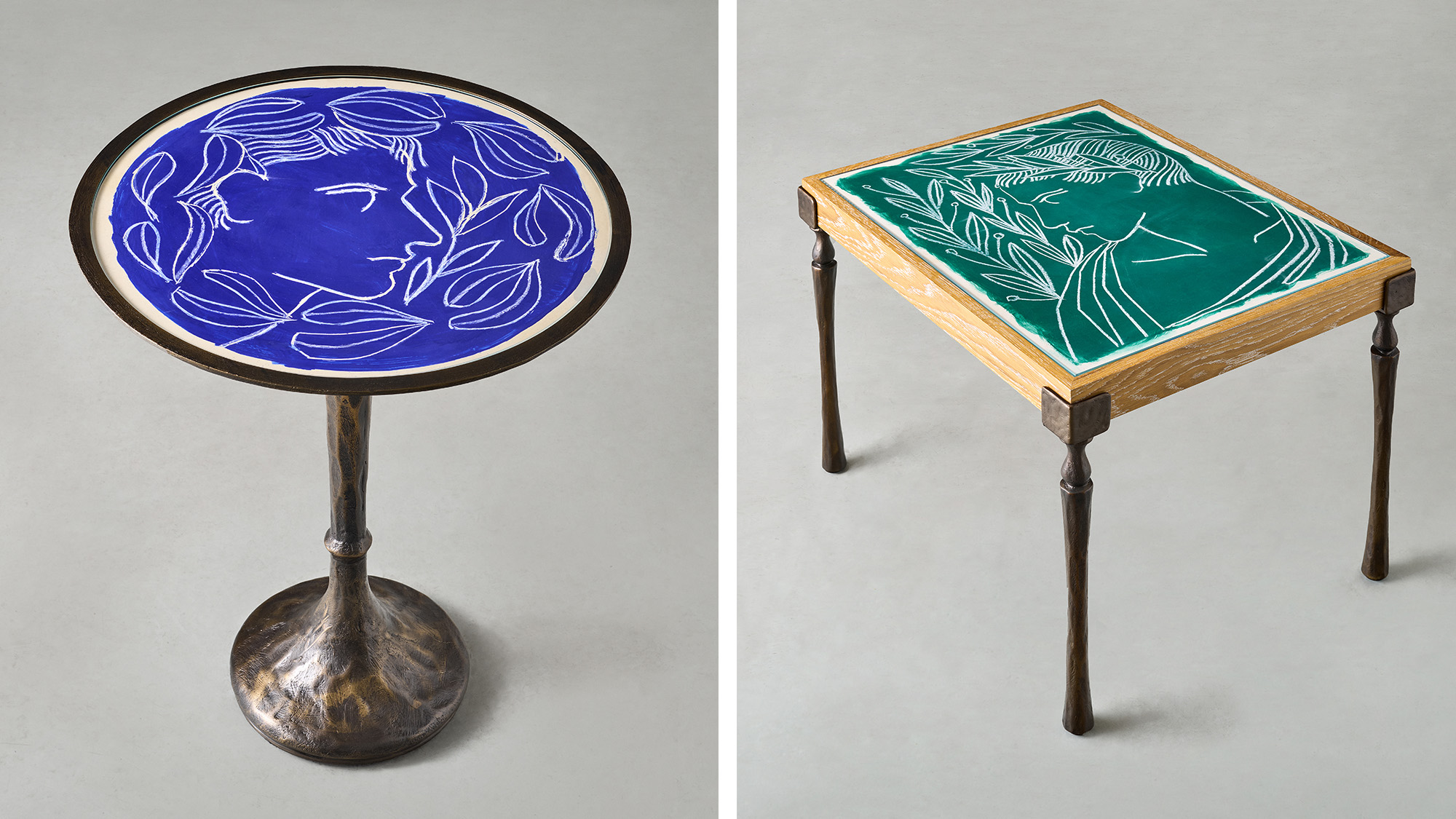 Francis Sultana and Roberto Ruspoli’s Greco-Roman-inspired furniture feels fresh and contemporary
Francis Sultana and Roberto Ruspoli’s Greco-Roman-inspired furniture feels fresh and contemporaryA new collection, launching at David Gill Gallery in London, presents furniture and decorative pieces inspired by Mediterranean villas, French art and Etruscan engraving
-
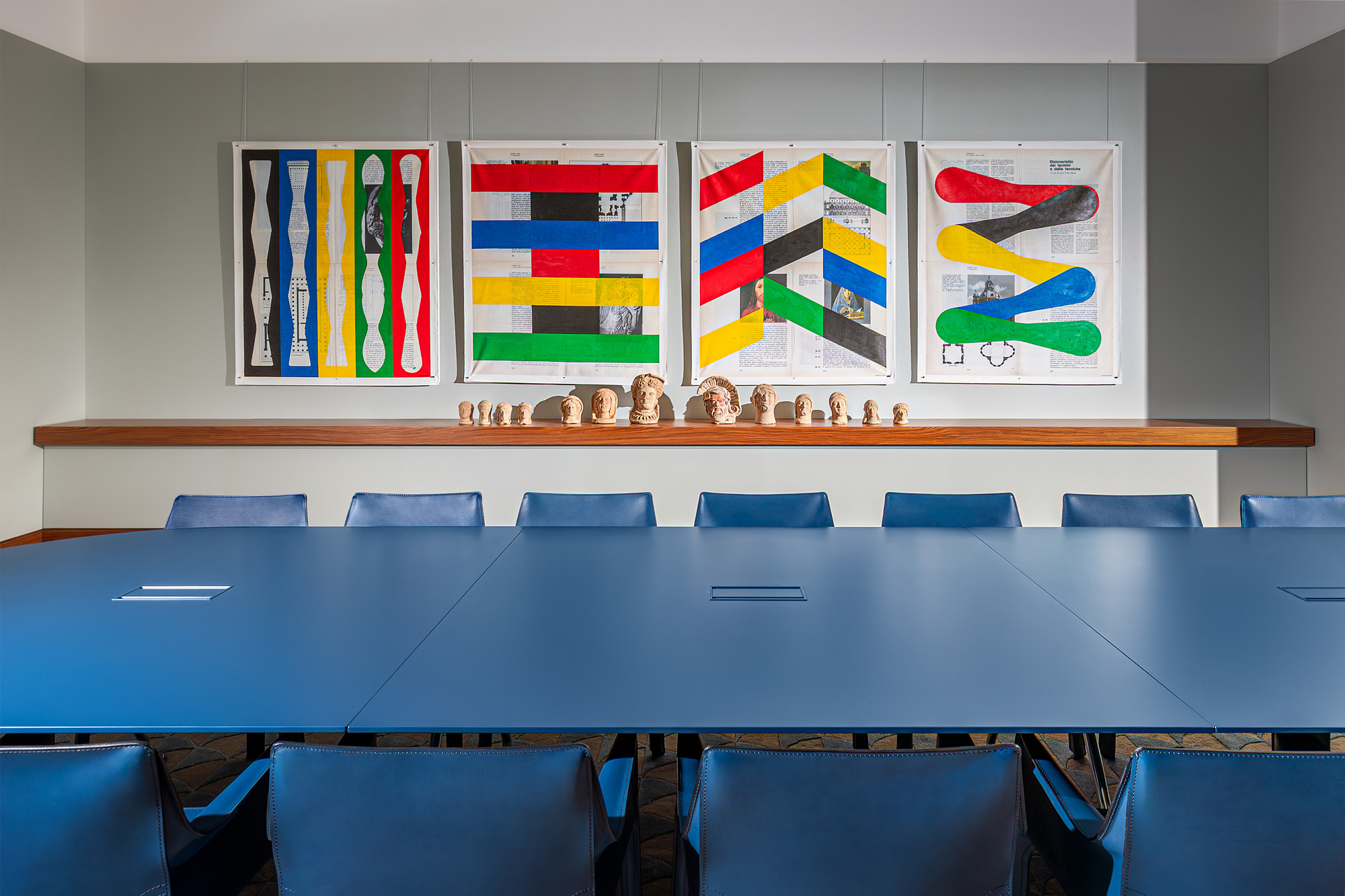 The new office of the Italian embassy in London is a love letter to the country’s creativity
The new office of the Italian embassy in London is a love letter to the country’s creativityWallpaper* takes a peek inside Casa Italia, the new Italian embassy in London, designed by our long-time collaborator Nick Vinson
-
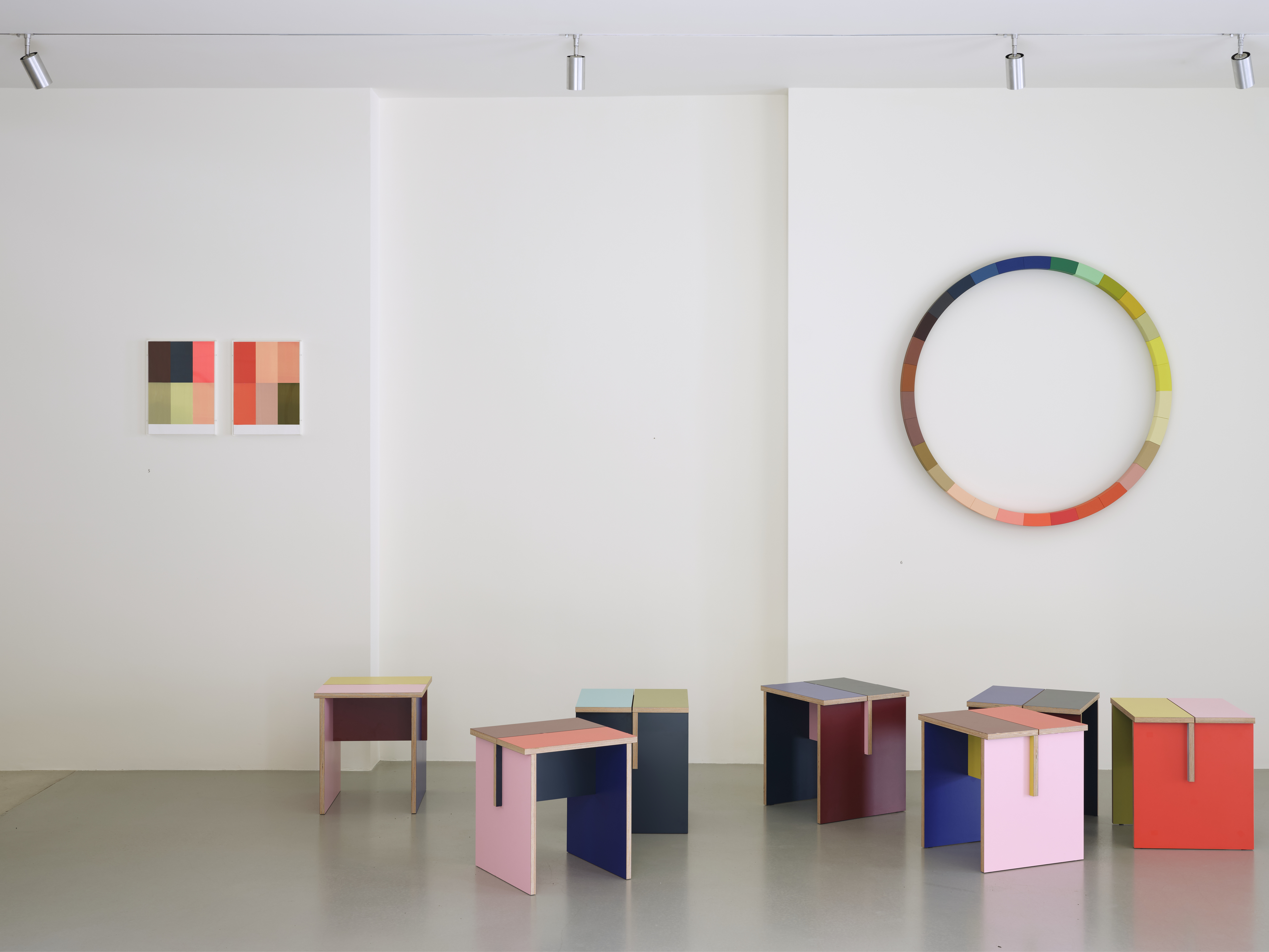 Sophie Smallhorn’s plywood tables for Uncommon Projects are colourful and modular
Sophie Smallhorn’s plywood tables for Uncommon Projects are colourful and modularThese modular tables by the artist and the plywood specialist play with colour for function, fun and flexibility
-
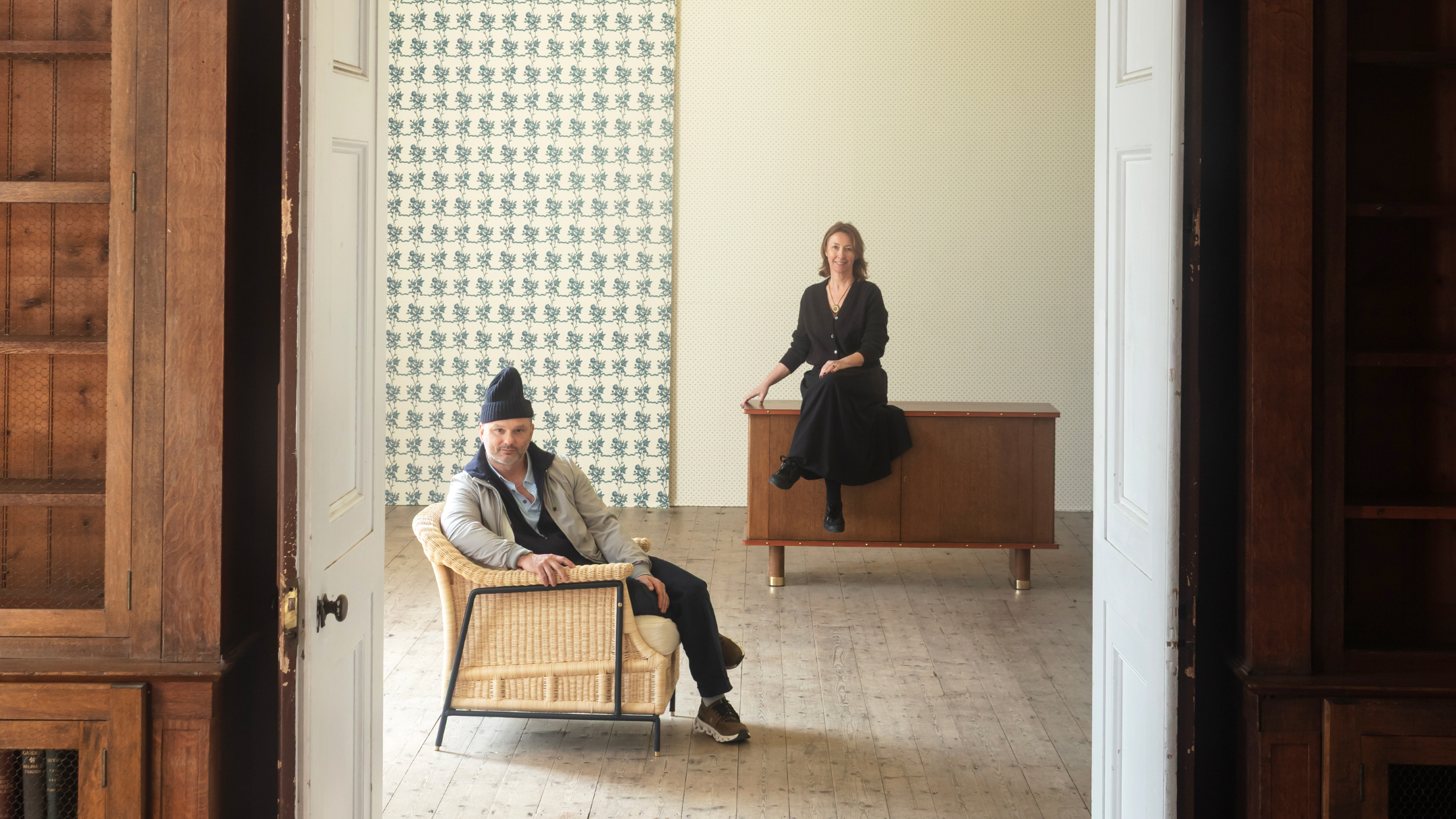 American vision meets British craft in Billy Cotton’s new collaboration with Soane Britain
American vision meets British craft in Billy Cotton’s new collaboration with Soane BritainYes, there’s rattan, but the lauded New York designer also brought in brass, oak and more. ‘There’s a sort of alchemy to these materials,’ he says
-
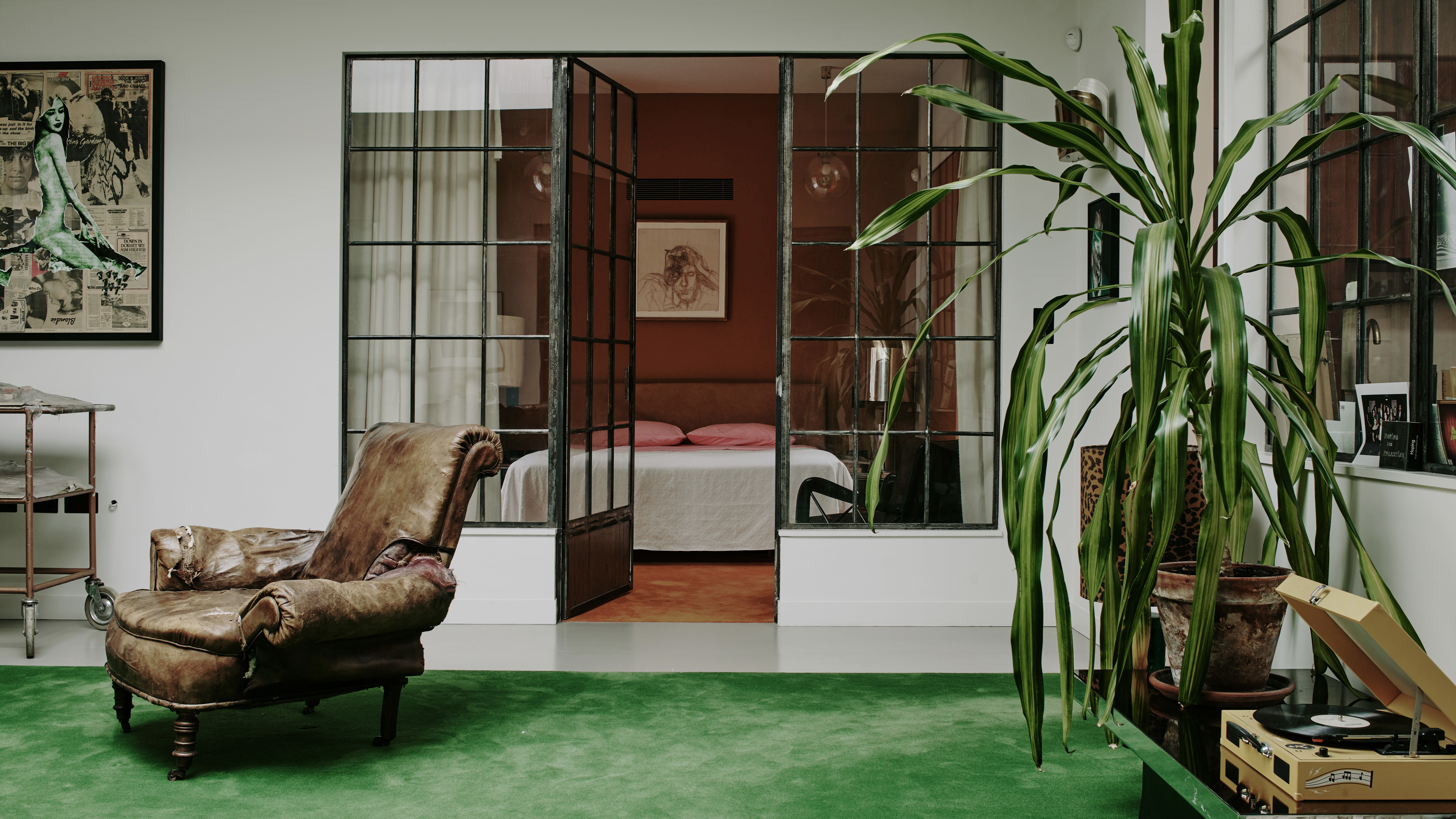 A new coffee table book proves that one designer’s trash is another’s treasure
A new coffee table book proves that one designer’s trash is another’s treasureThe Rizzoli tome, launching today (16 September 2025), delves into the philosophy and process of Retrouvius, a design studio reclaiming salvaged materials in weird and wonderful ways